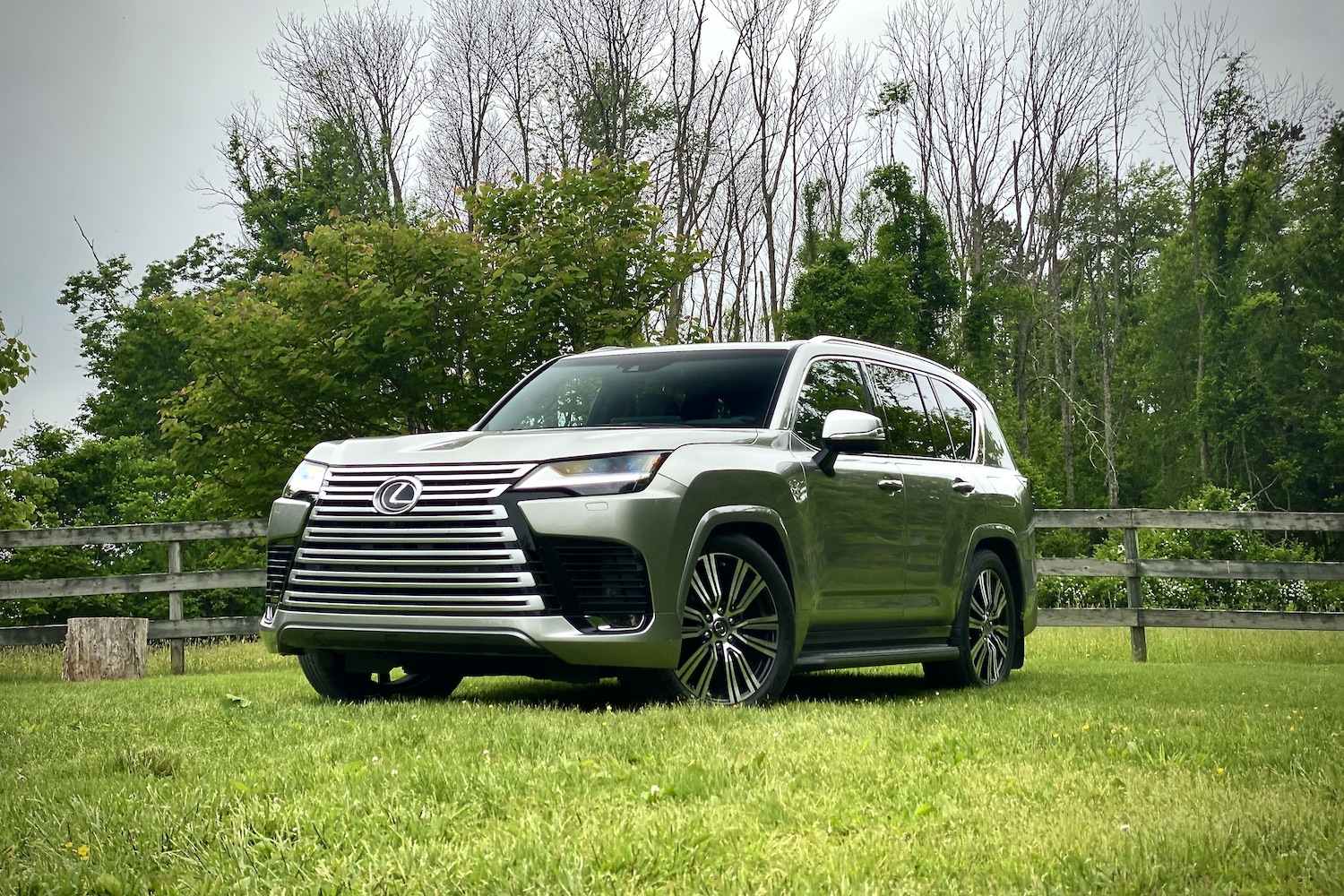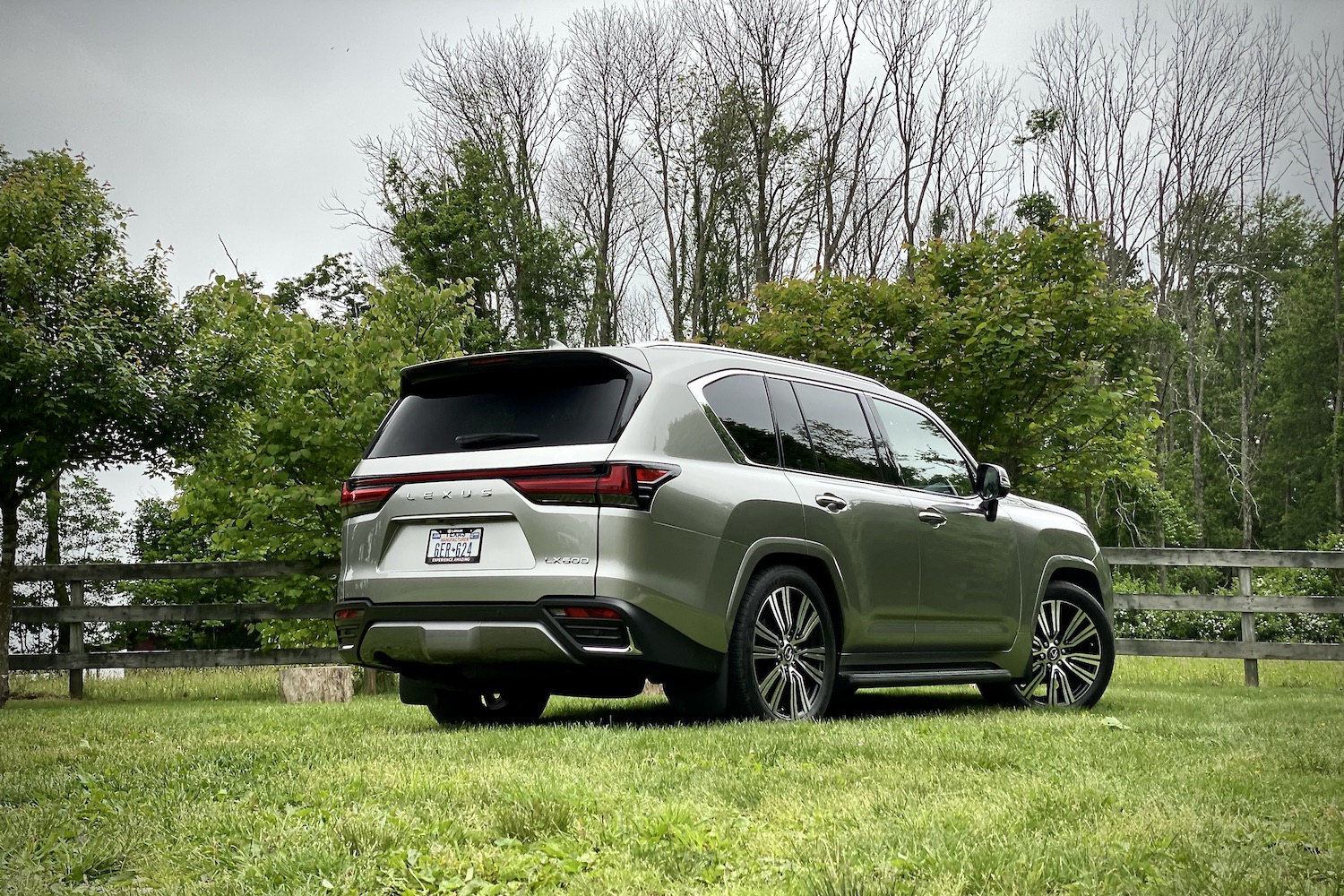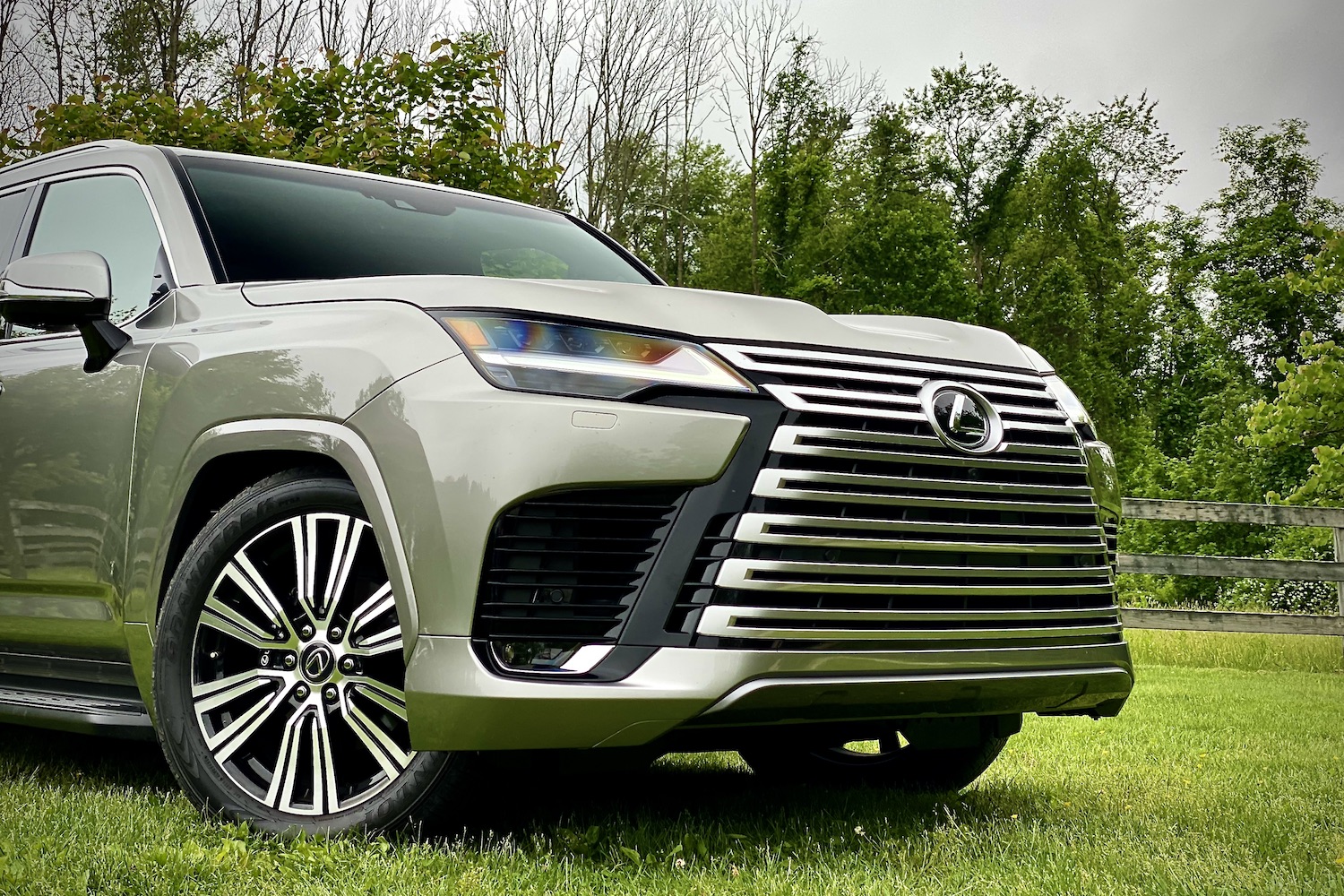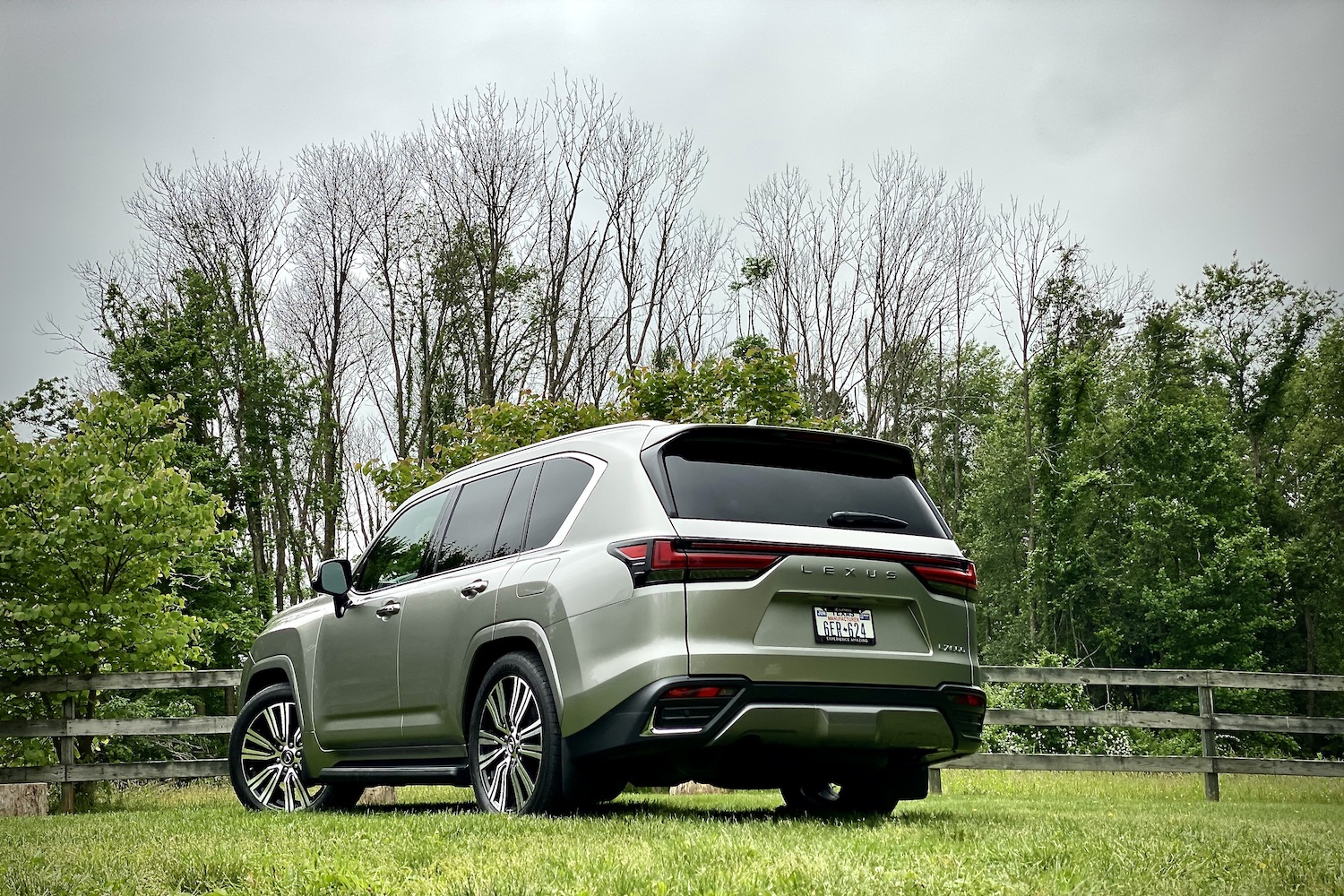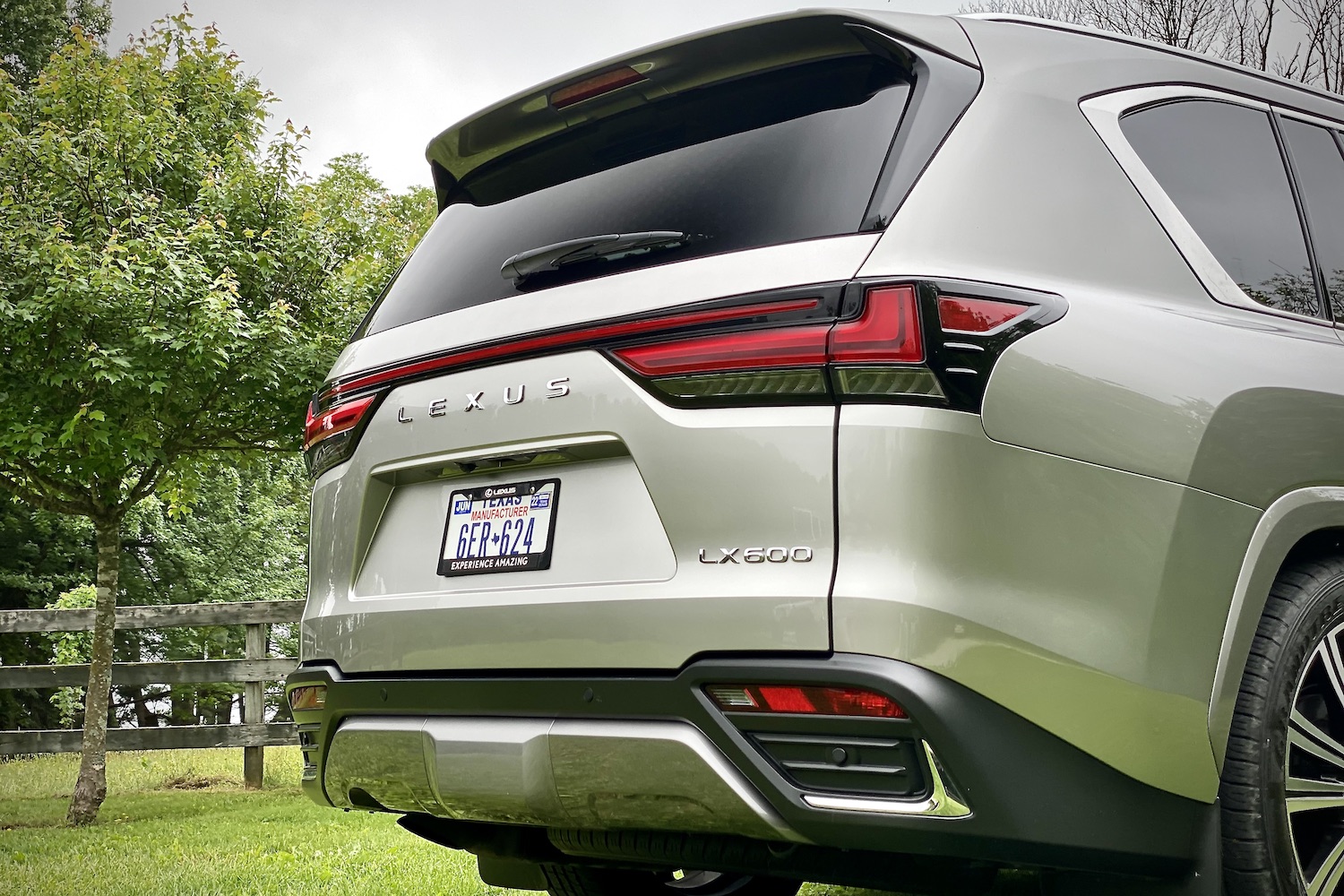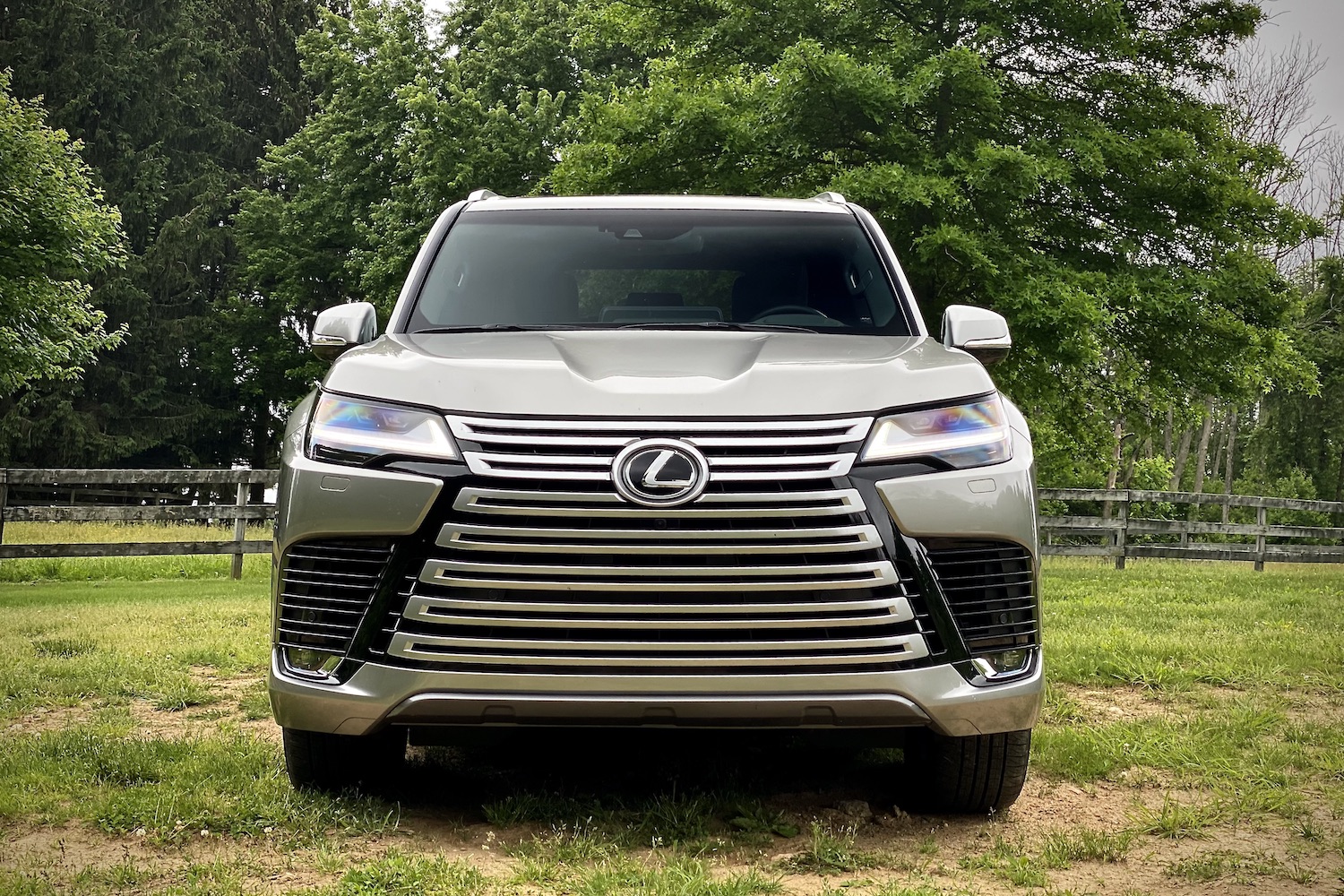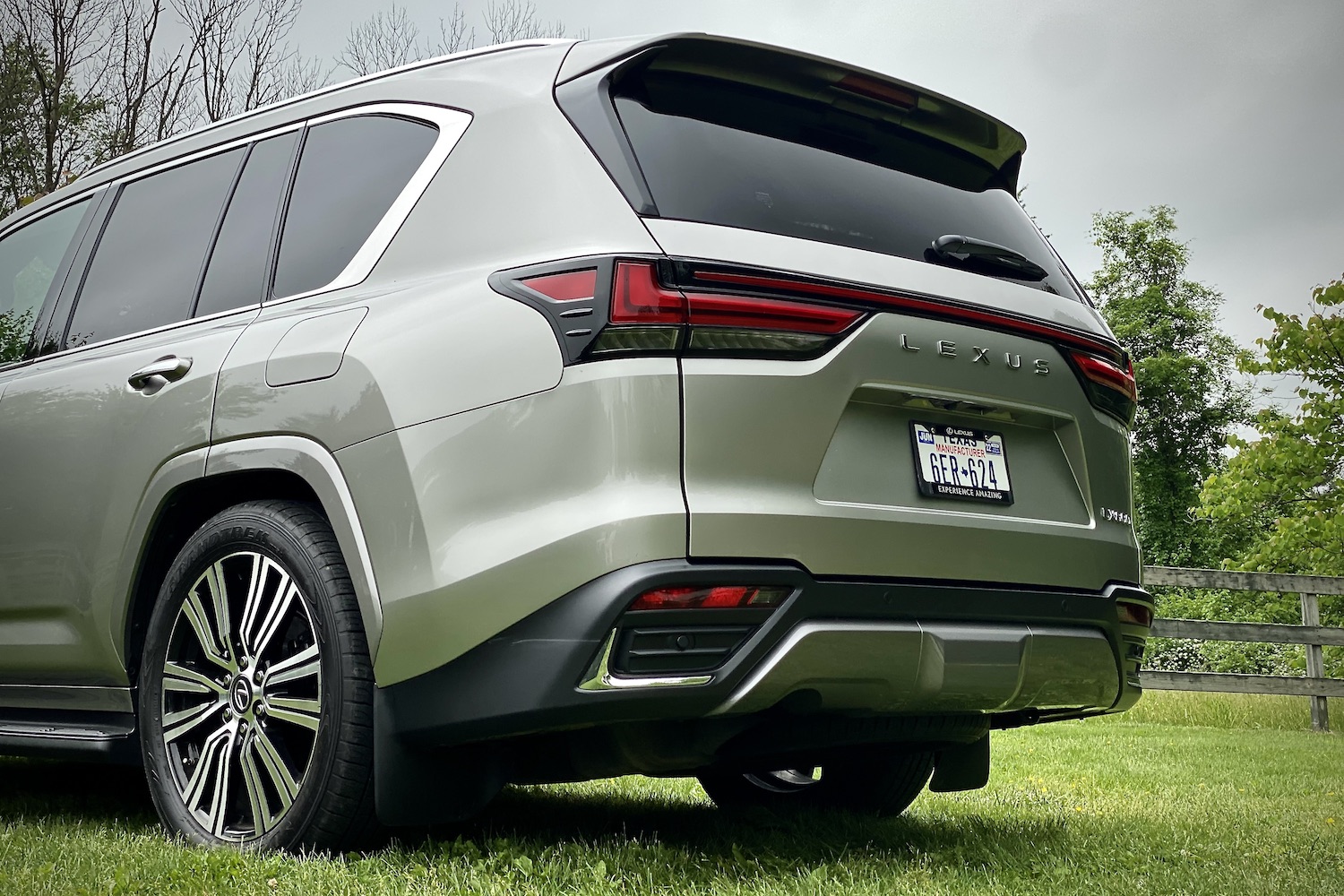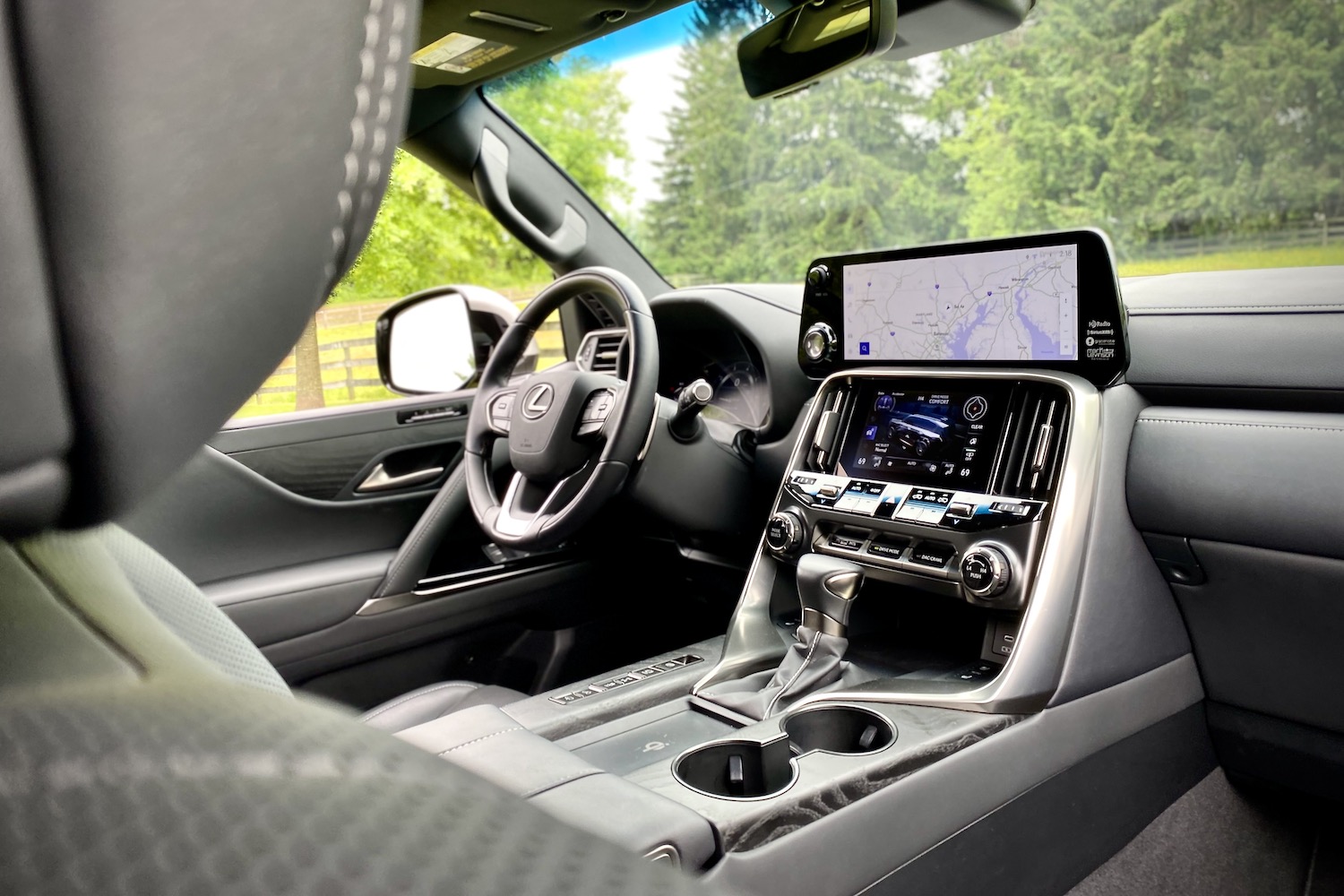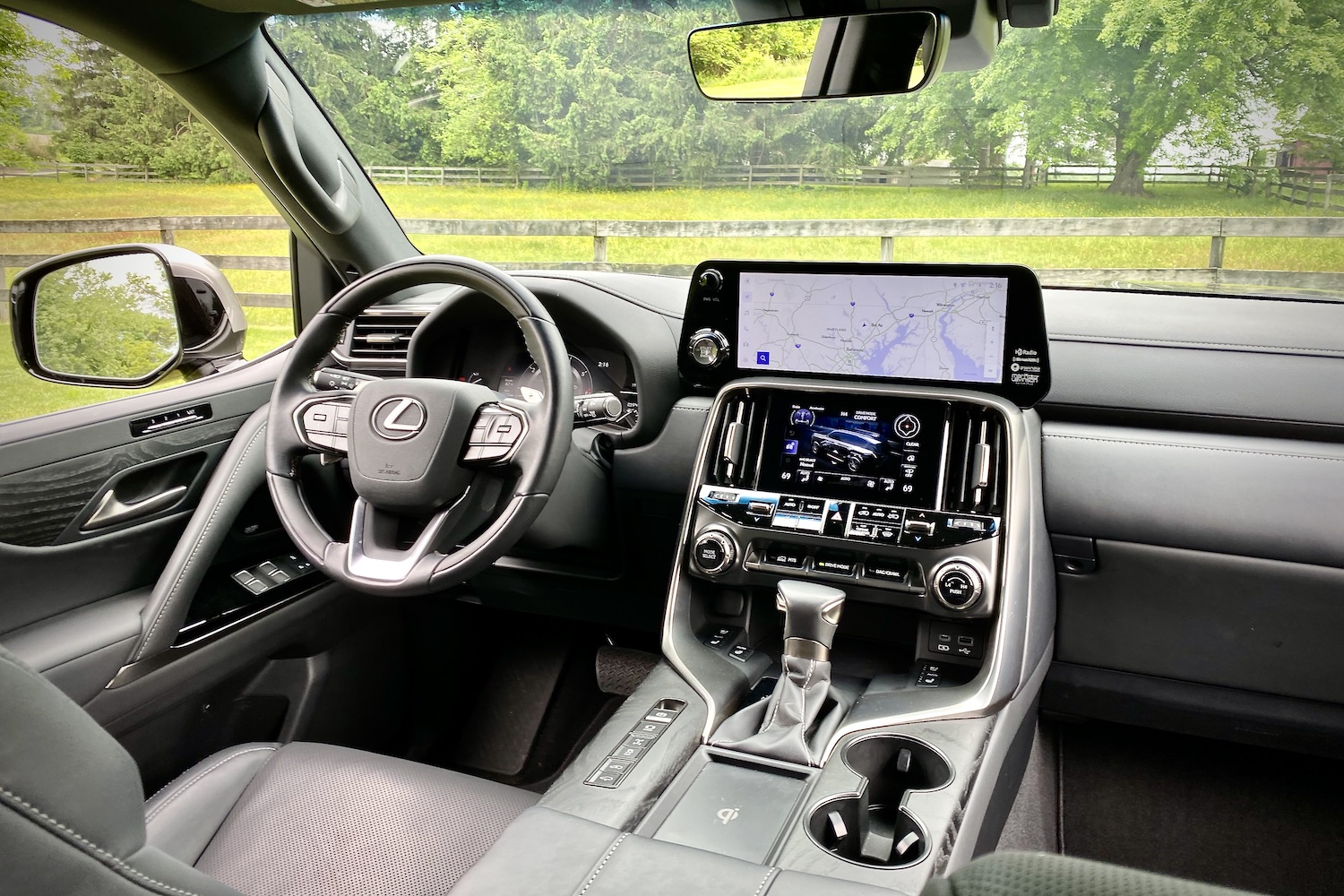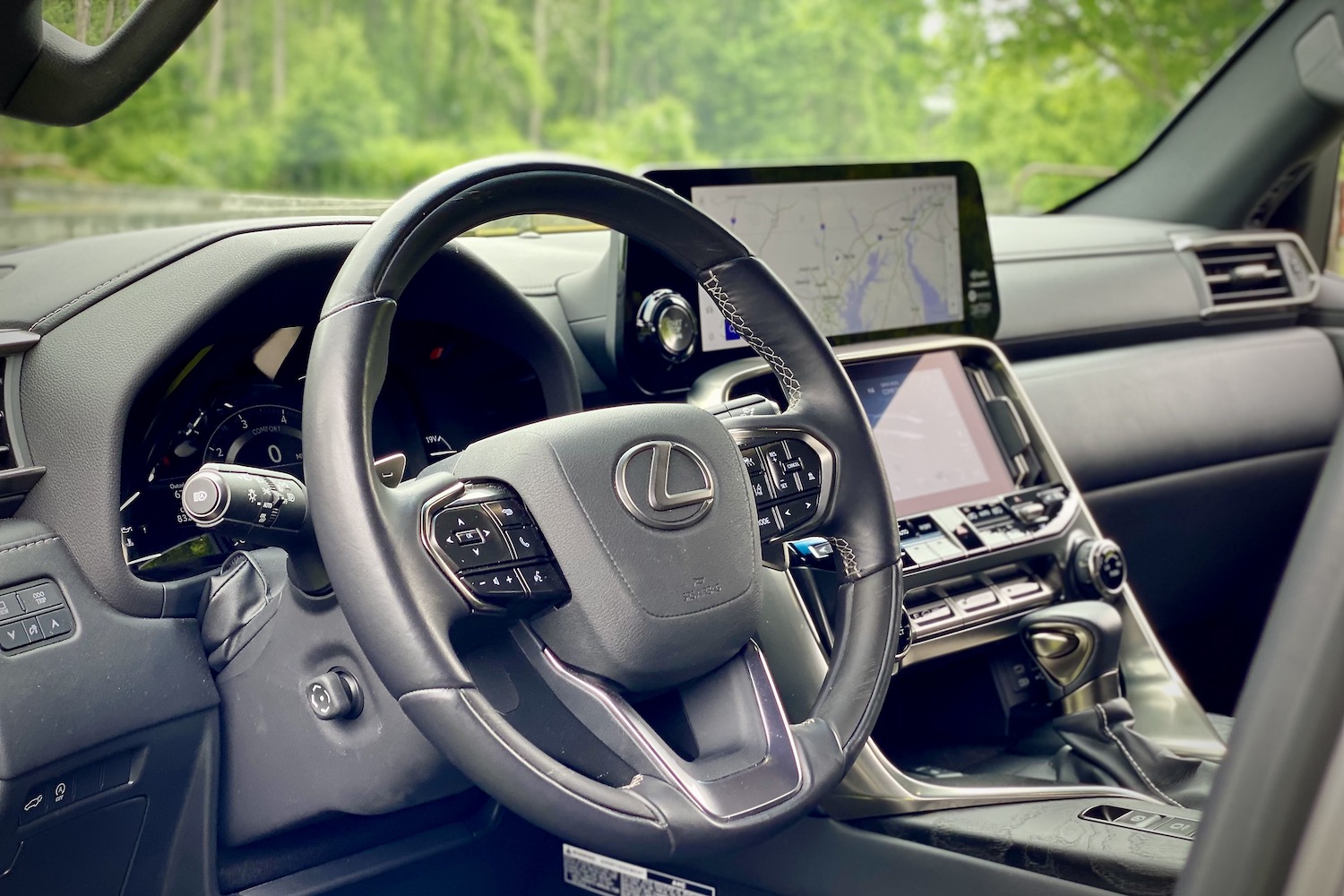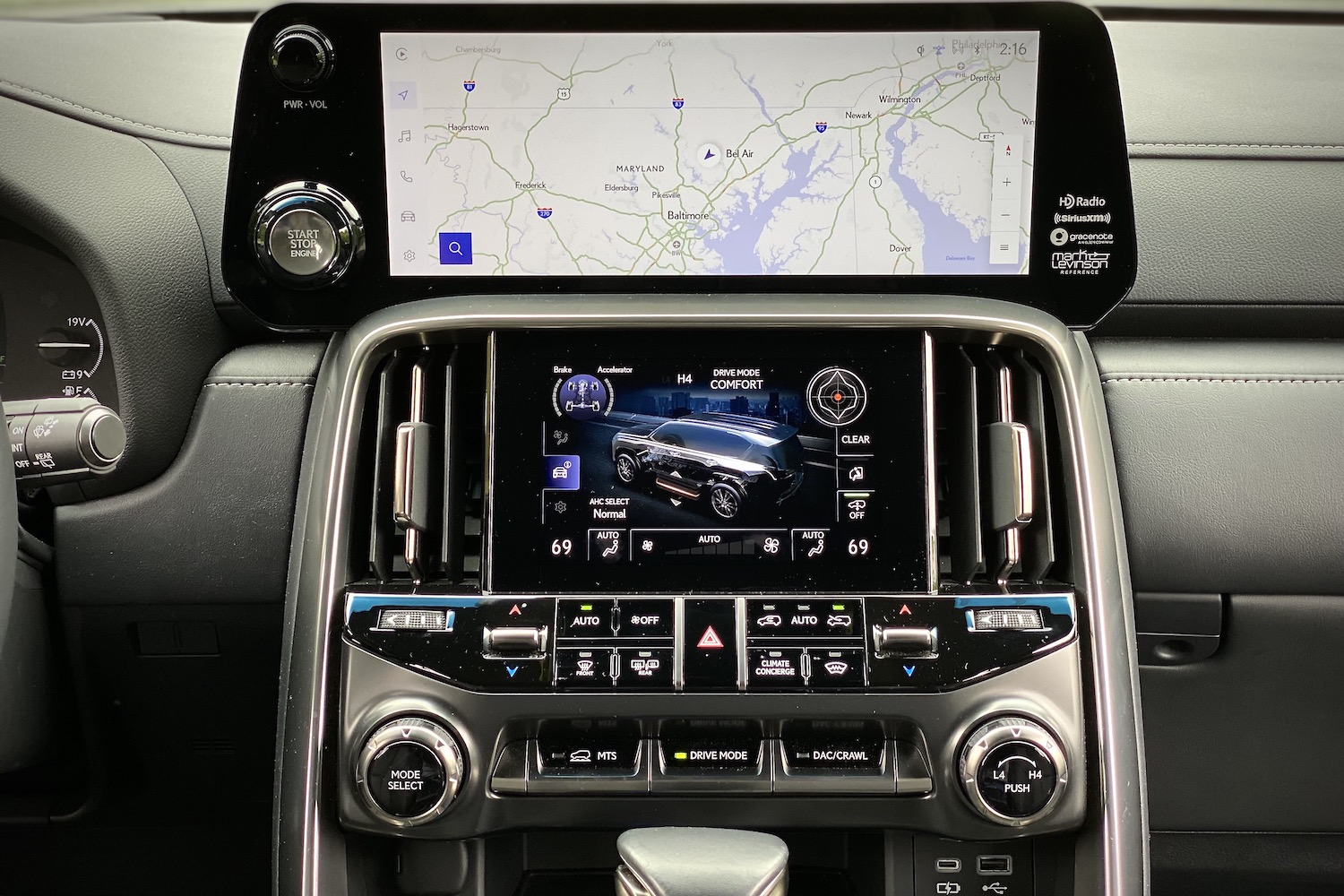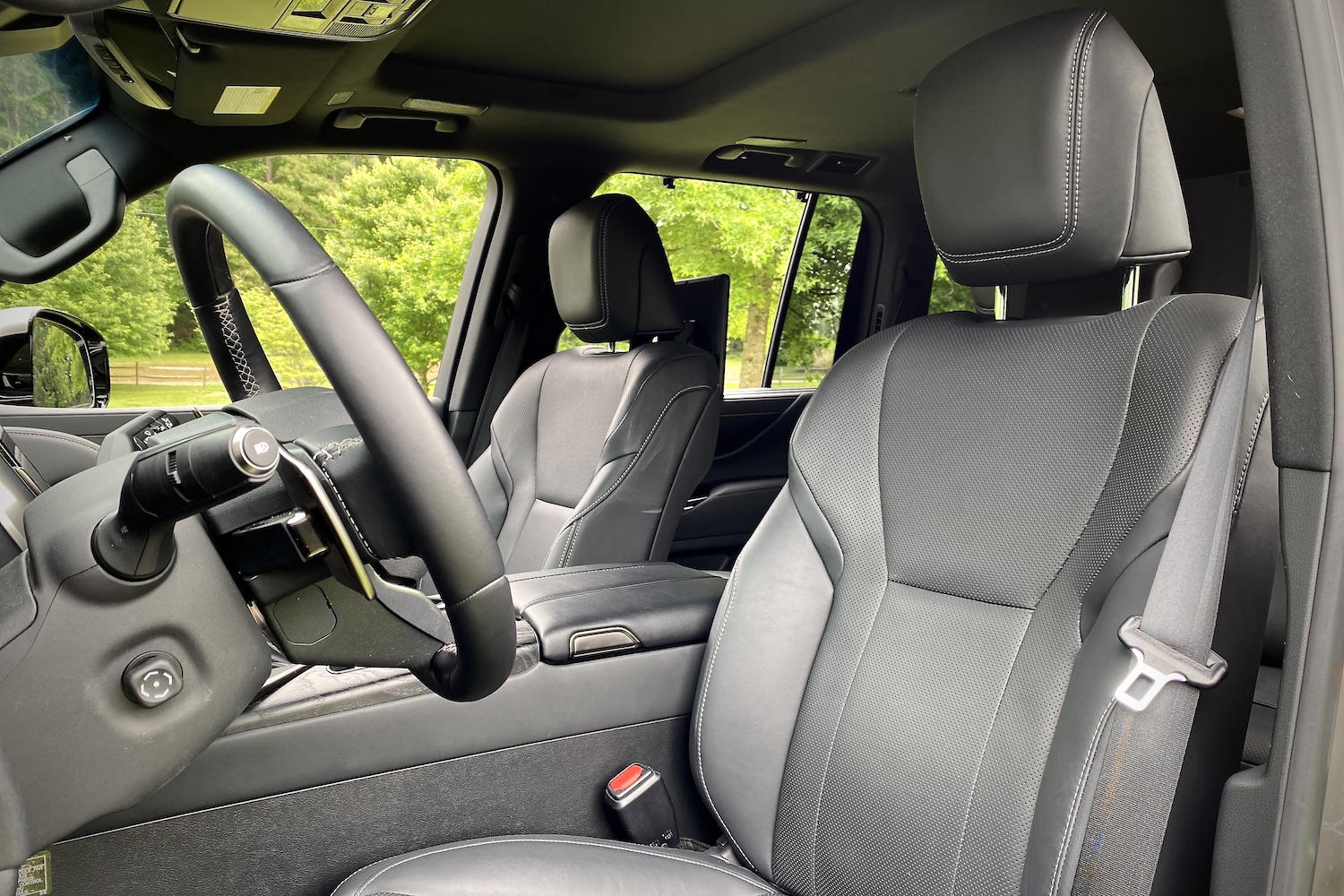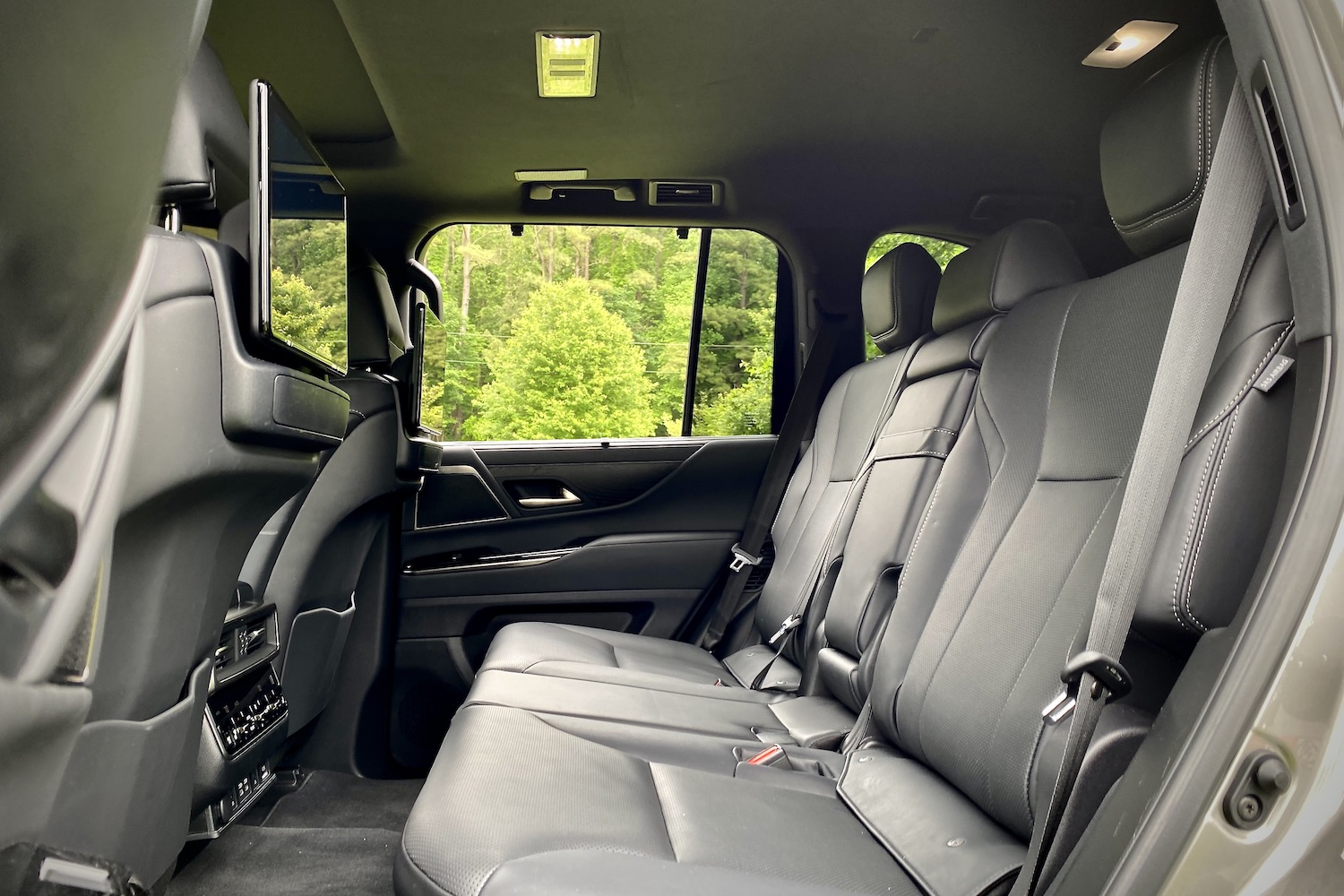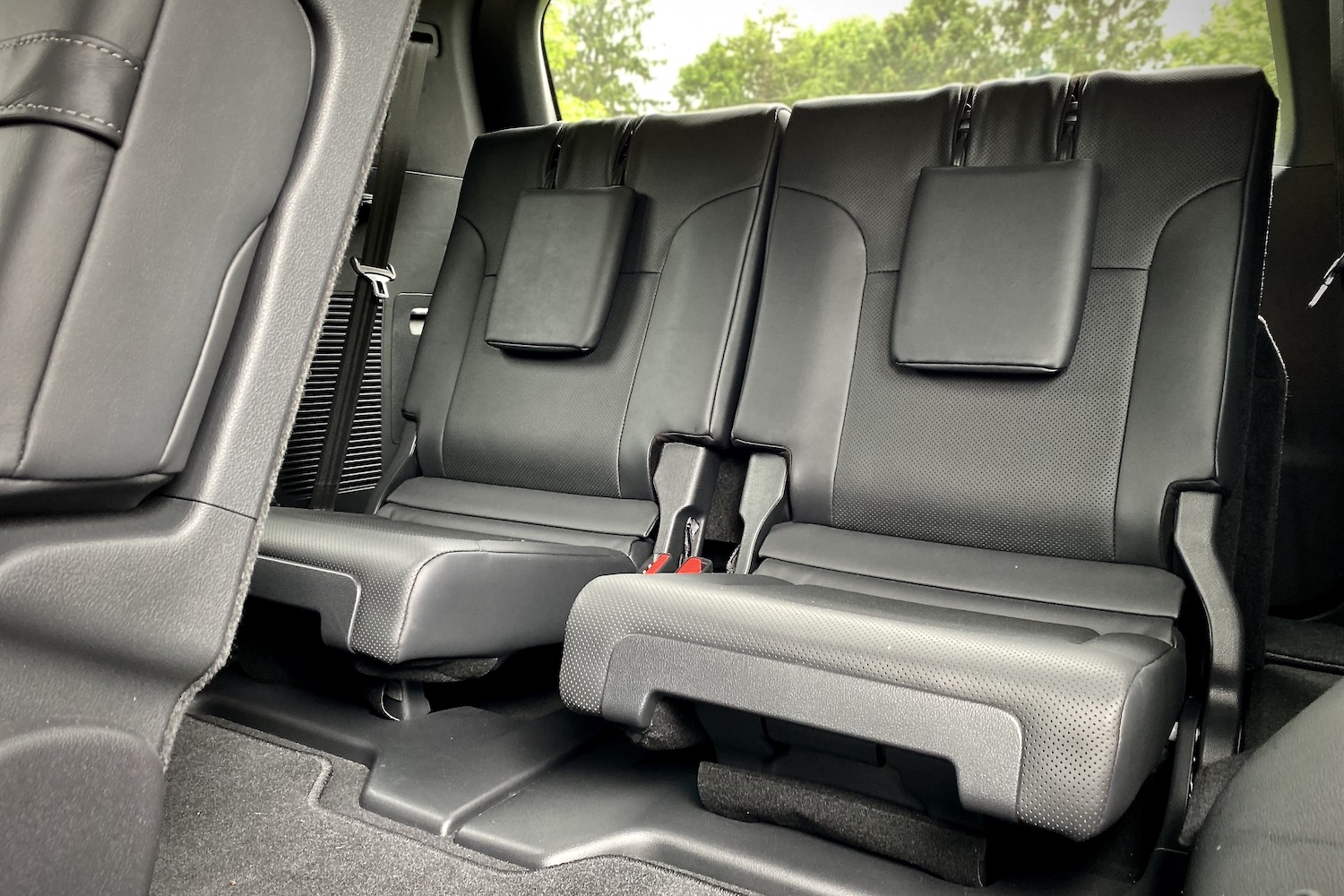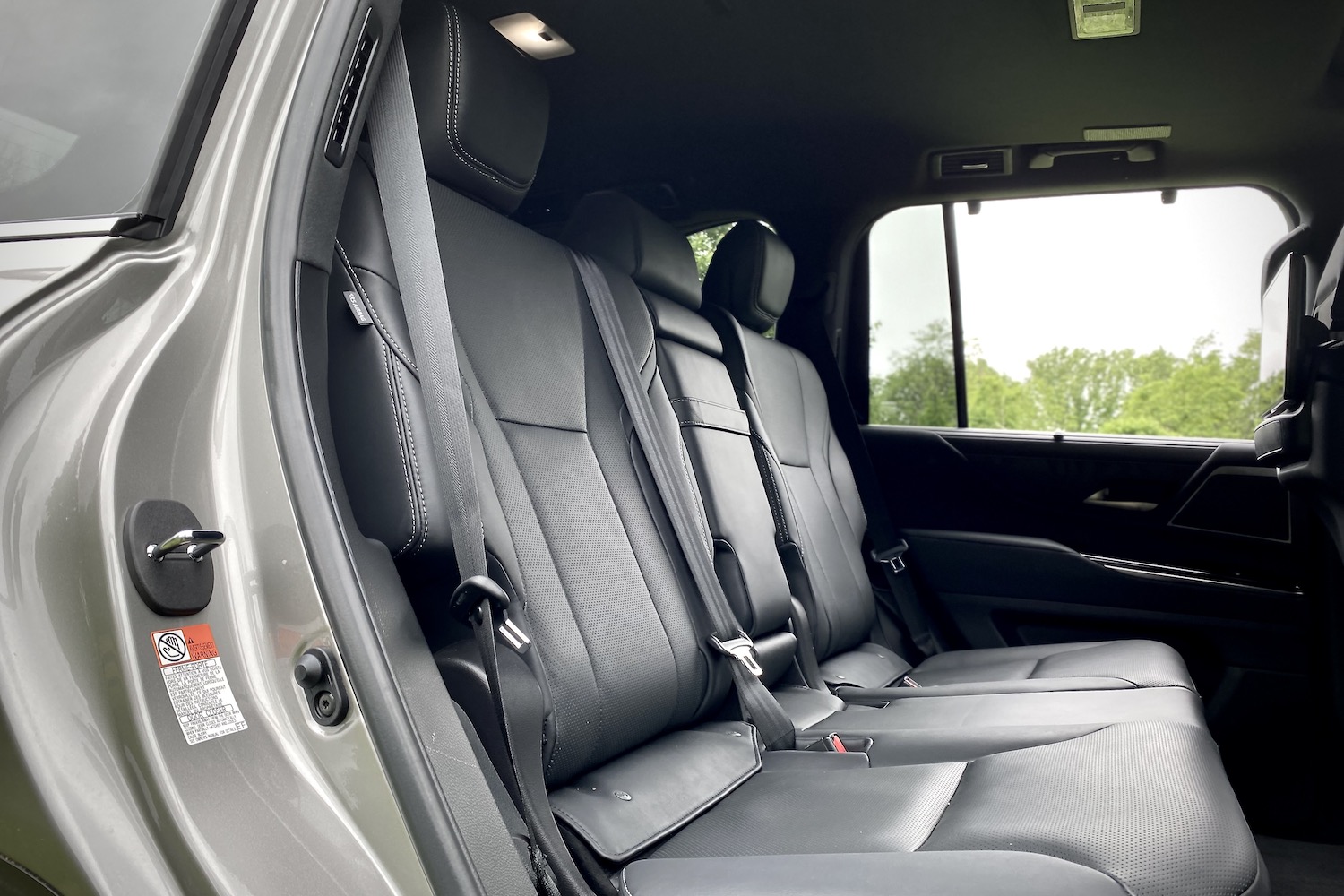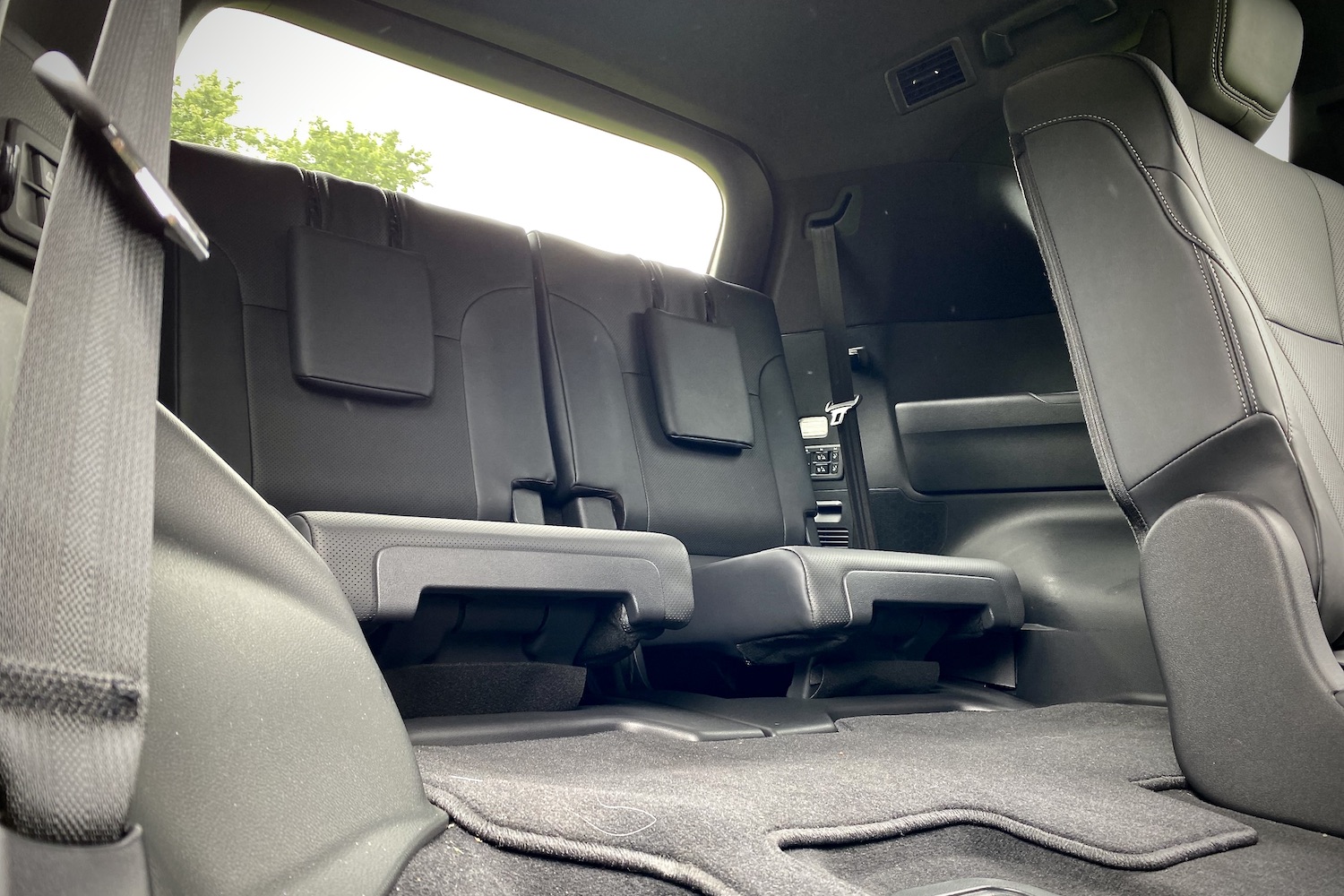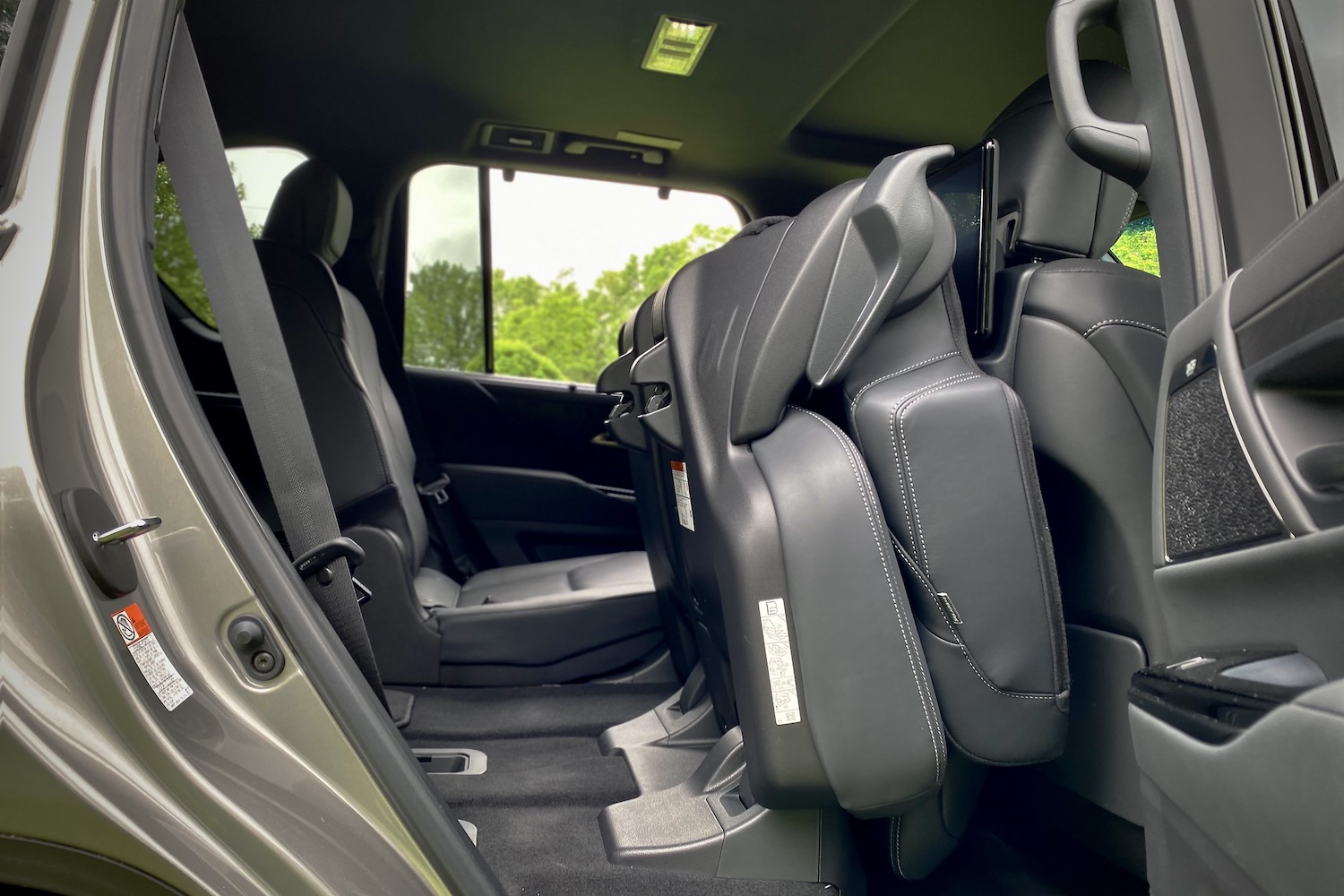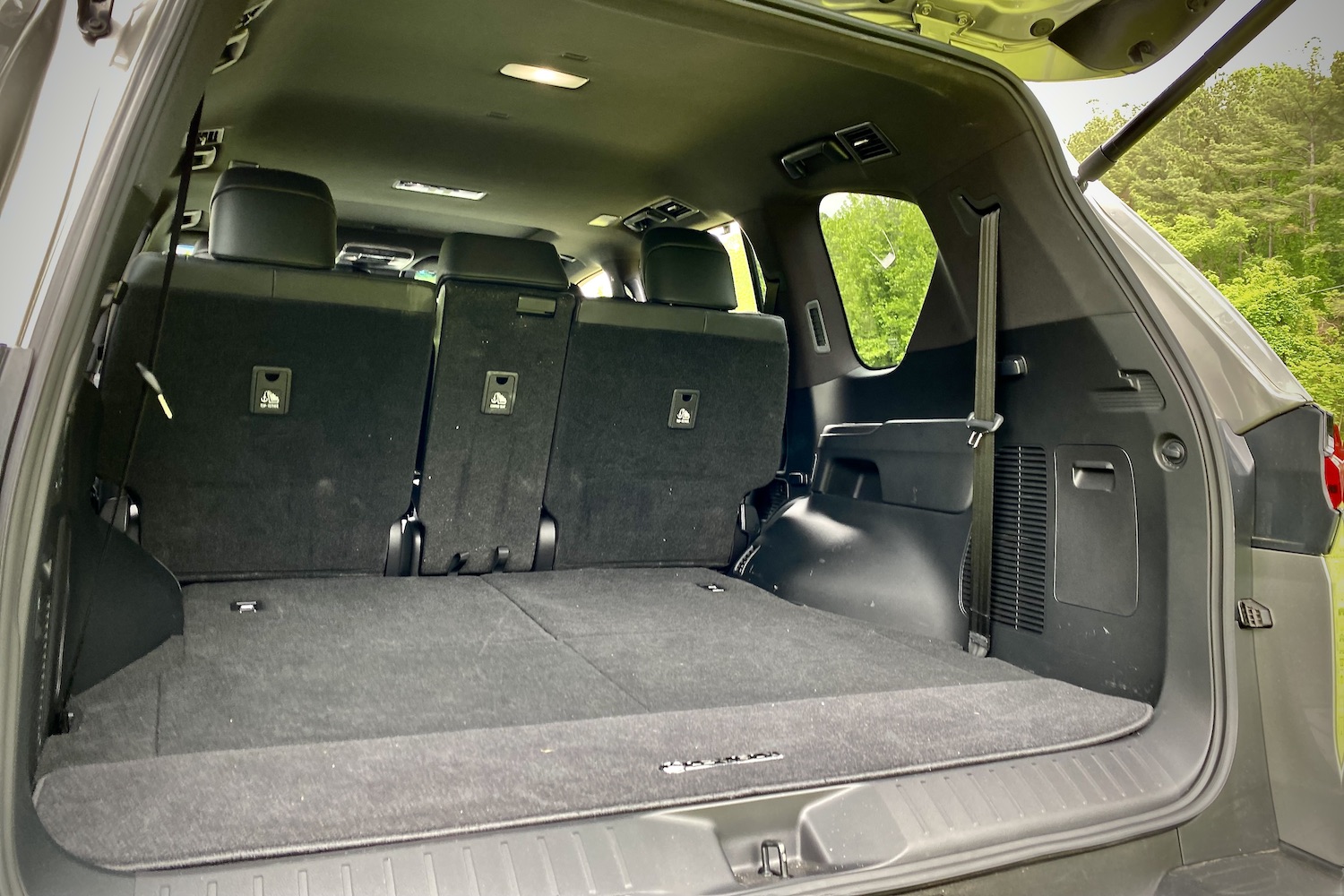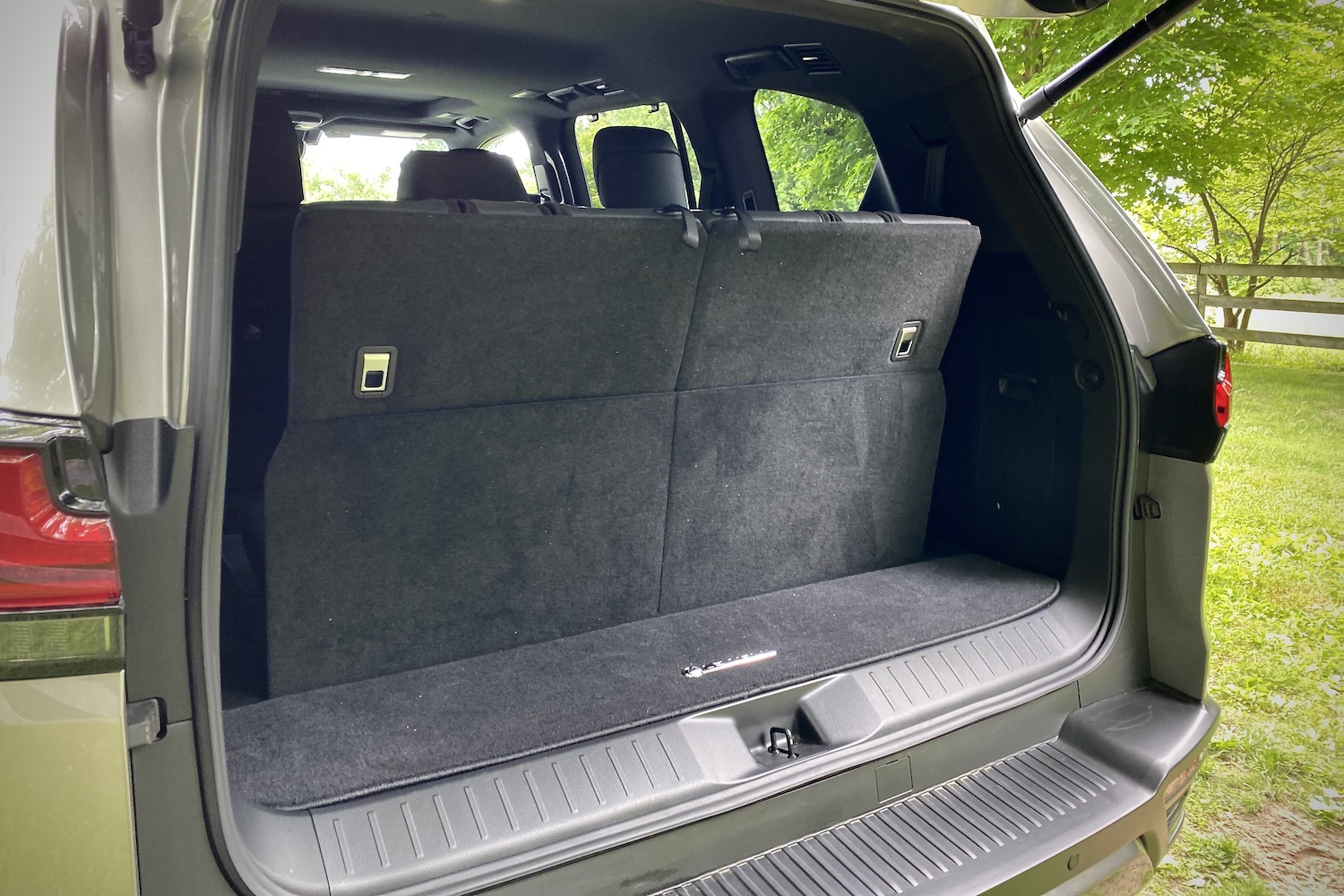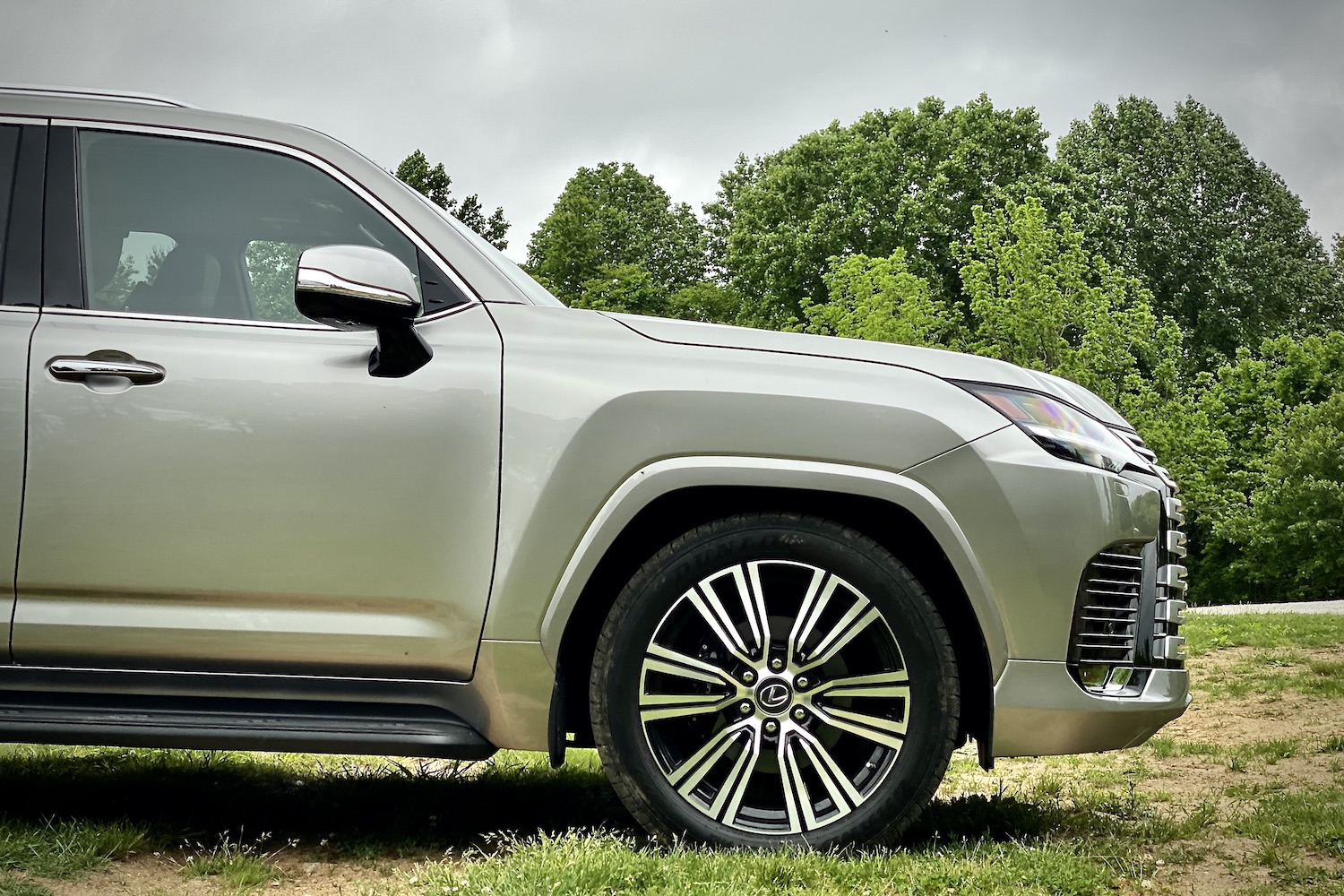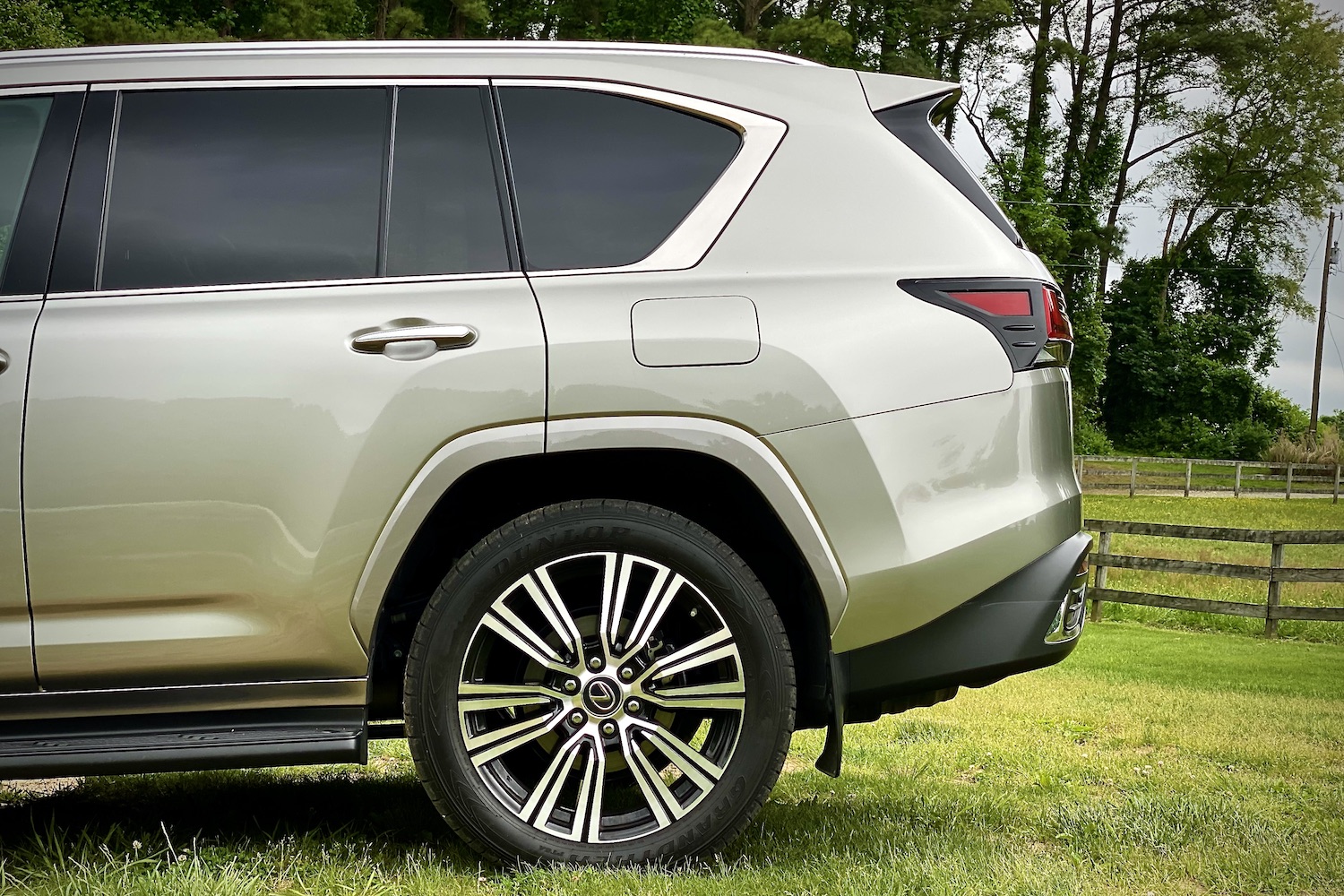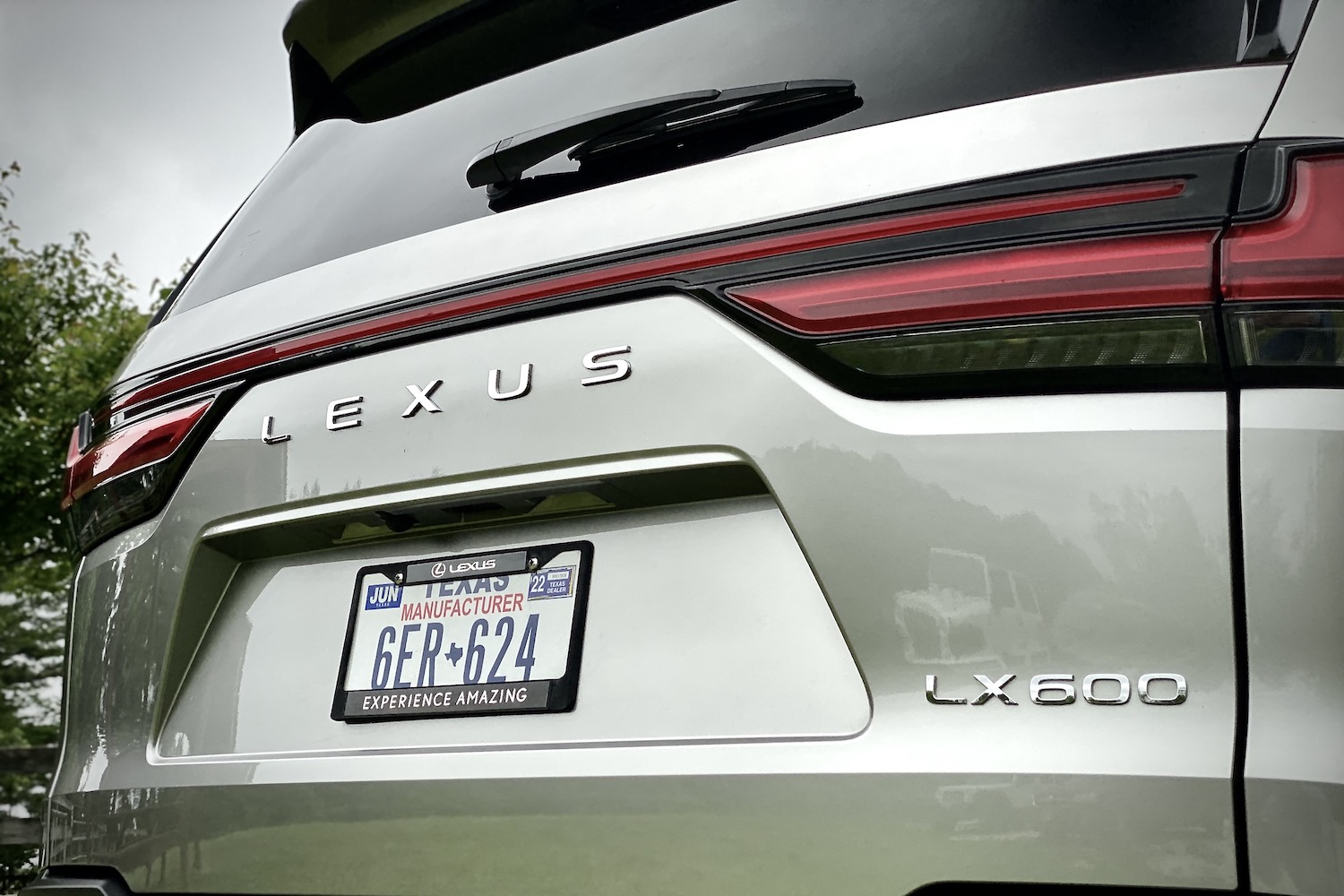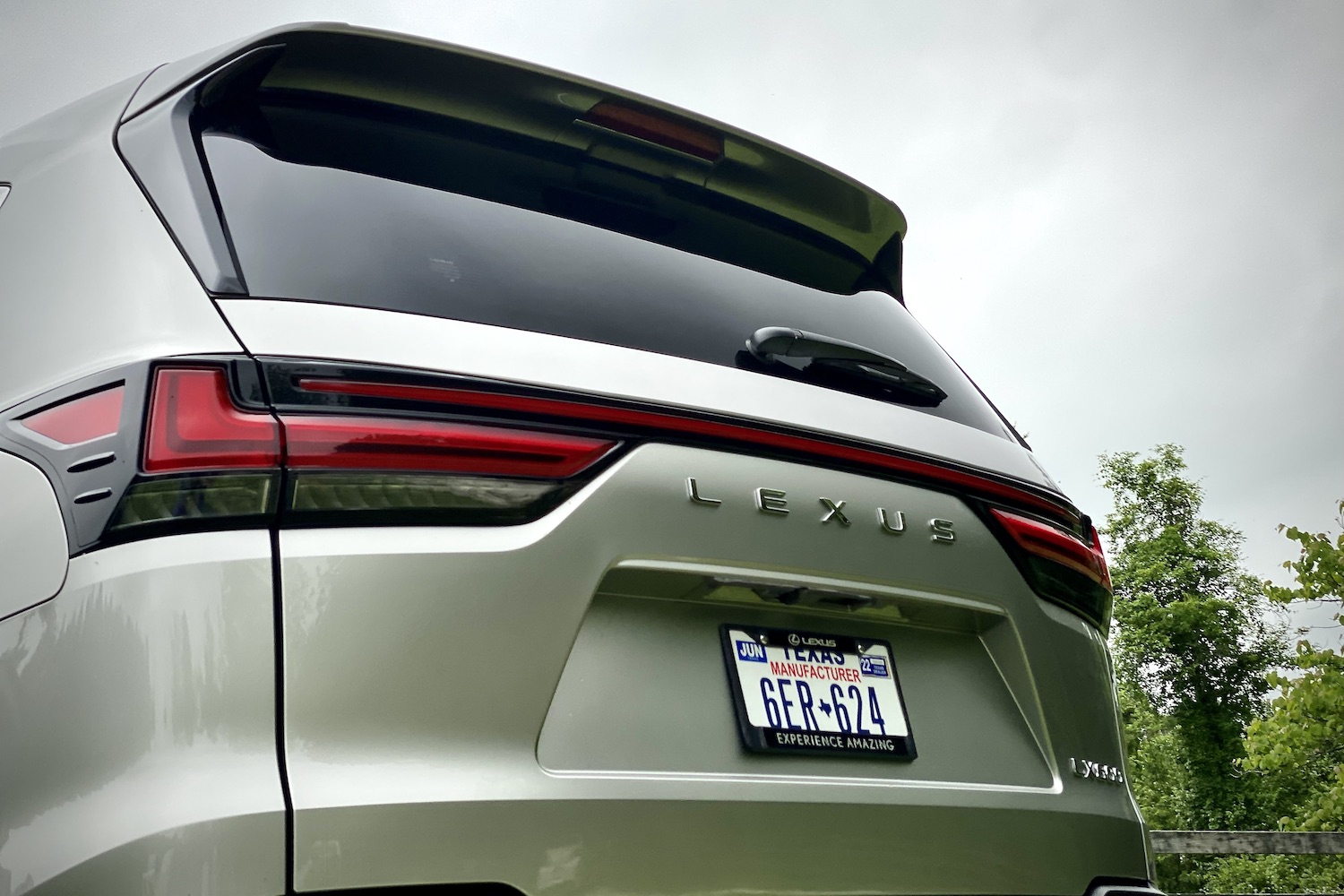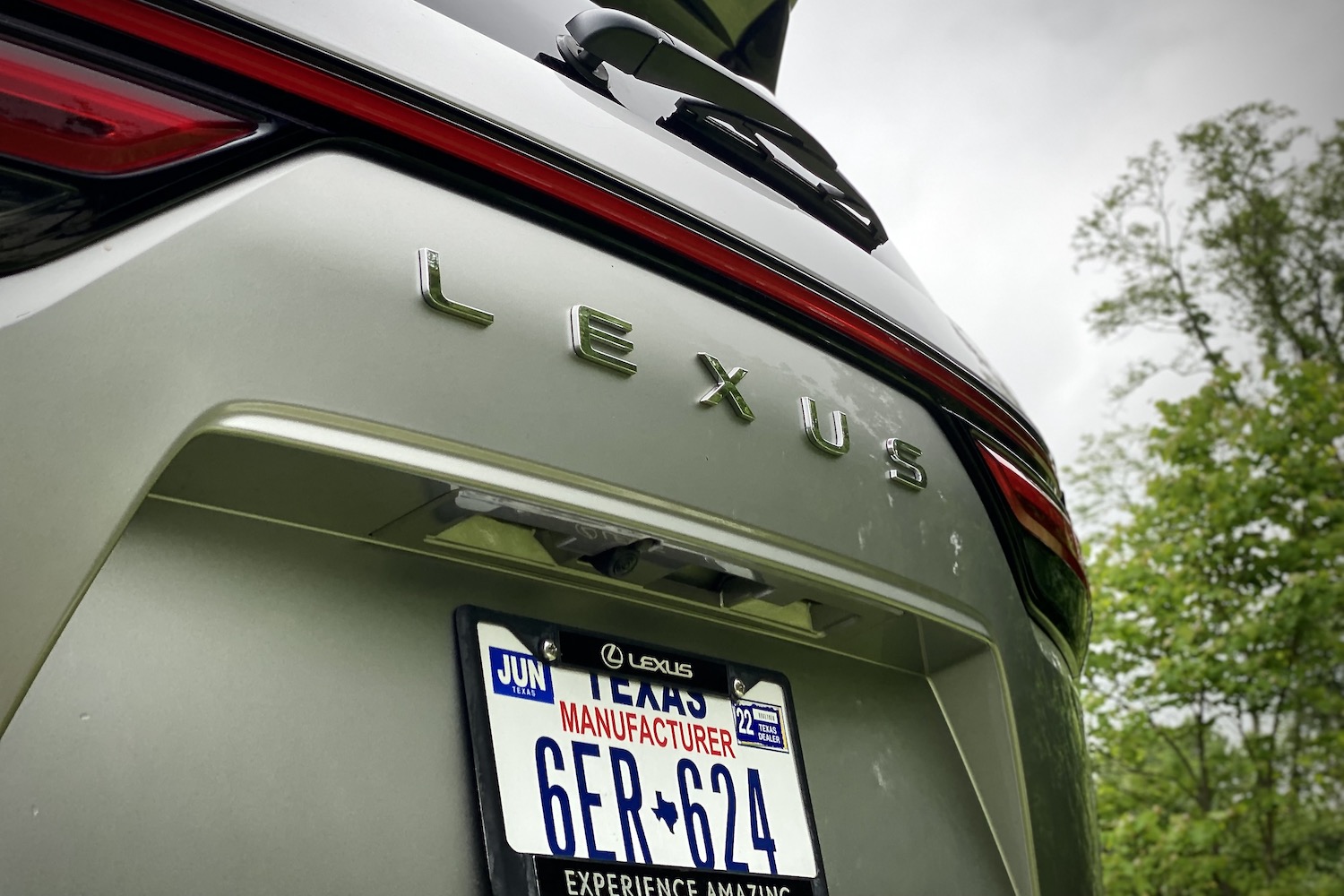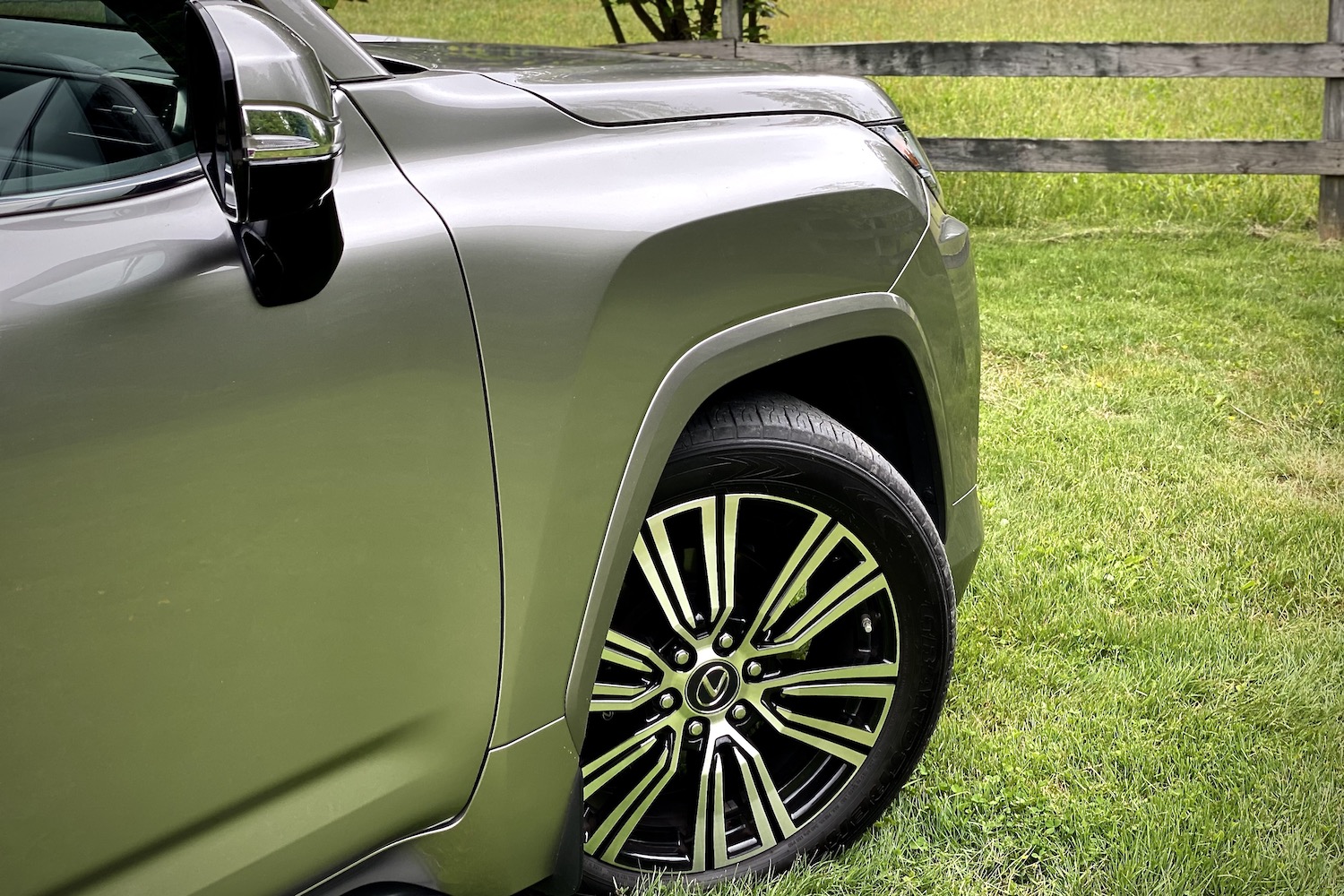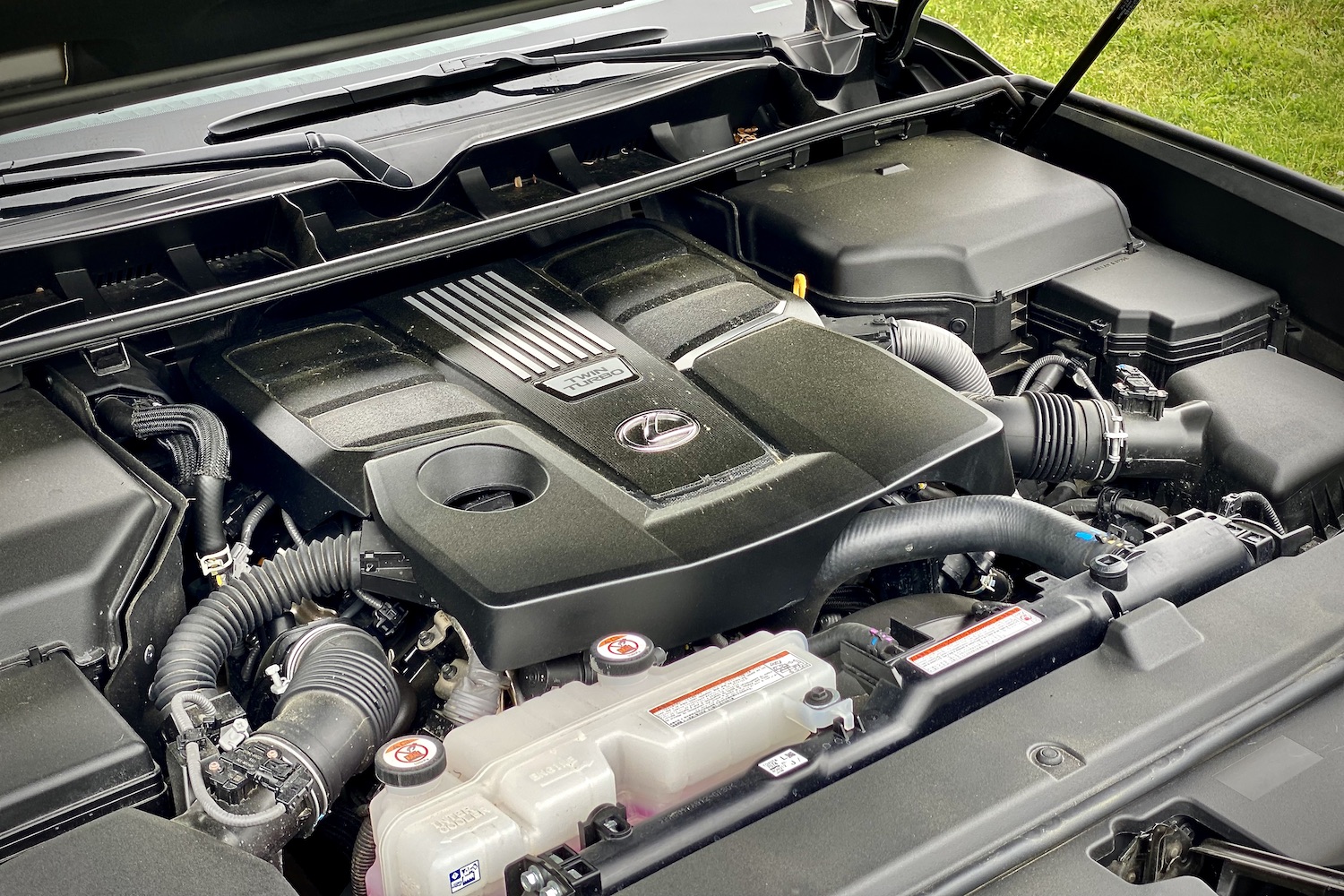Consumers looking for a bulletproof luxury SUV with serious off-roading chops had all of their wishes fulfilled by rubbing the Toyota lamp and asking the genie for a Land Cruiser. That’s not the case anymore, as Toyota pulled the plug on that SUV for 2022. While global consumers can purchase a redesigned Land Cruiser, shoppers in the United States will politely be ushered to Lexus to buy the new 2022 LX 600. Underneath the new design, the LX 600 is basically a reskinned version of the global Land Cruiser. Despite the new look, more luxurious cabin, upgraded tech features, and more refined powertrain, the LX 600 is still a flagship luxury SUV that knows how to get down on a dirt trail.
While other automakers are hard at work upgrading their large SUVs to feel less like heavy-duty trucks and more like extra-large plush cars, Lexus is sticking to what it does best. The LX 600 now sits on the TNGA-F platform and comes with a punchy turbo V6 engine that’s from this era. While the LX 600 is incredibly similar to the outgoing LX 570 in size and the way it drives, it’s modern enough in other respects to feel like it’s been through a thoughtful redesign to appeal to more than one kind of shopper.
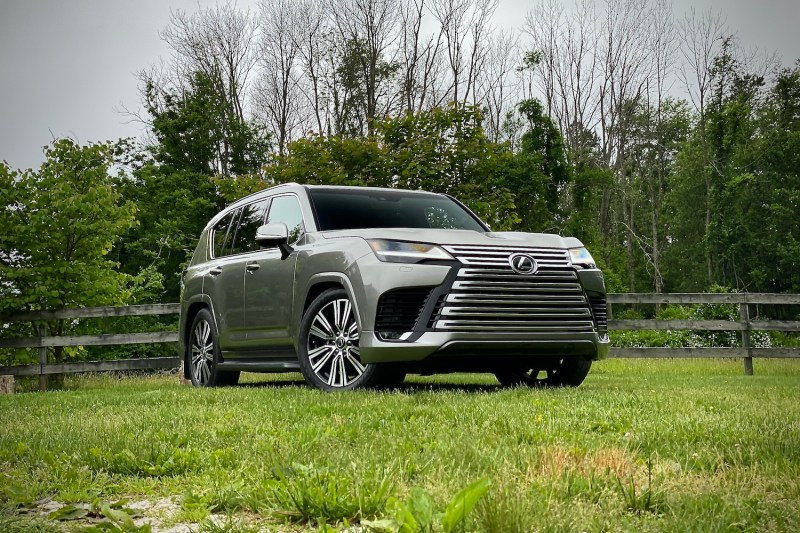
Lexus LX 600 exterior: How did the grille get larger?
Compared to the outgoing LX 570, the new 2022 LX 600 doesn’t look radically different, with the largest change being an even larger grille. The SUV’s face is a little shocking at first, like you’re staring directly into an automotive version of Kylo Ren’s mask, but the LX 600 is just following a trend. The LX 600’s tall look with short overhangs is all about giving it the off-roading design that it needs to get around trails. It’s also the SUV’s main downfall from a design standpoint. The LX 600 will continue to be just as divisive as the LX 570, and even more so with the available F Sport model.
The main issue with the LX 600 is that it’s just not as pretty as other SUVs. It still has the road presence that most people are looking for with large luxury SUVs, but the feeling that makes people stop and stare in bewilderment at how large and luxurious SUVs have become just isn’t there. The Mercedes-Benz GLS looks muscular and refined, the Jeep Grand Waggoner has a stately appearance, and the Cadillac Escalade is American without going full McDonald’s. The LX 600 has a funky front end and just kind of exists.
Lexus LX 600 interior: Finally, a modern look
The glaring flaw with the outgoing LX 570 was its archaic interior. That mercifully changes with the 2022 LX 600, but the interior still isn’t up to Joanna Gaines’ standards. It’s far more attractive than the last-gen SUV, and Lexus quality matches the best from Germany these days, but it’s missing that it factor. The dashboard and center console have a futuristic, fighter jet appearance with dual screens, a litany of dials and controls, and a curvy design that flows into the center console. While the LX 600 lacks the striking look of most of its rivals, you’re trading the fireworks for clear controls.
Where’s the interior space?
One of the major problems with the large SUV class is that every option continues to grow. A few inches here and some extra inches there results in vehicles that could double as shuttle vehicles for small schools. Without growing drastically in size, the LX 600 is less roomy than its rivals. The LX 600’s large stature doesn’t translate to a roomy interior, especially in the second row, where the SUV only has 36.6 inches of rear legroom; in the third row, there are only 31.1 inches of legroom. Compared to some options, the LX 600 is down nearly five inches in second-row legroom and three inches for leg space in the third row. In the real world, that means adults will find it torturous to sit in the back, and the second row feels more economy than business class.
Cargo space in the LX 600 is equally as disappointing. It’s more in line with roomy midsize SUVs than with large SUVs on the cargo capacity front. Two-row models and the Ultra Luxury trim offer up to 71 cubic feet of cargo space. Quite a few large SUVs offer more than 100 cubic feet of total cargo space.
A normal third row
Confusingly, the previous LX 570 used to have available third-row seats that folded upwards into the side of the SUV. This differed from the design in every other SUV on the planet, where the third row folded up from the bottom. Thankfully, Lexus engineers have fixed this issue, as the third row now acts like every other one you’ll find. Seems small, but it’s a big thing.
Lexus has also thought about the wealthy individuals that have no use for a third row. The fix comes with the Ultra Luxury trim that has a four-seat configuration with captain’s chairs, a full center console in the back, a massaging feature for every seat, and a right-rear passenger seat that reclines to an almost fold-flat position. It certainly looks luxurious, though the LX 600 we tested didn’t come with the fancy seats.
Confusing dual-screen layout
Every LX 600 comes with three screens that include an 8-inch gauge cluster, a 12.3-inch touchscreen, and a separate 7-inch screen just below the central touchscreen. At first glance, the dual-screen setup in the dash seems really impressive. The 12.3-inch display has crisp graphics, snappy response times, and a fresh look, but the 7-inch display that sits below the central screen is a disappointment. It’s used to control vehicle settings and functions, but it feels like it’s from a different era with simple graphics. Plus, Lexus includes physical controls, so why does the SUV need a second display to show you what HVAC settings you’ve just chosen? It seems like an afterthought, a knee-jerk reaction to a Slack questionnaire of what the engineers should do with the empty space.
Lexus LX 600 driving experience: Who needs a V8?
Moving from a V8 to a V6 may seem like a downgrade to most people, but Lexus found a way to make a six-cylinder feel just as gutsy as a V8 and sound half decent, too. The LX 600 now comes with a twin-turbo 3.4-liter V6 that’s putting out 409 horsepower and 479 pound-feet of torque. Every engine is paired with a 10-speed automatic transmission that routes power to all four wheels.
Despite losing two cylinders, the V6 gains 26 horsepower and 76 pound-feet of torque. Power from the engine is silky smooth, and the transmission shifts effortlessly. While there are quite a few missteps with the LX 600, the SUV’s powertrain is one of its stronger qualities.
Still rides like a truck
The LX 600 comes with plenty of goodies that should improve its ride, but the SUV still performs like an old-school truck. Handling has a laughable amount of roll, and the suspension translates a lot of small road imperfections into large jiggles. With other SUVs making large strides to feel smoother than before, the LX 600’s rough-and-tumble ride comes off as a major sore spot.
A proper off-roader
Off-road cruise control, digital tilt gauges, Trail Turn Assist that aids the SUV in making tighter turns, air suspension that can raise the SUV’s height by a few inches, a Multi-Terrain Select system, multiple cameras, a locking Torsen center differential, and a full-time four-wheel-drive system make the LX 600 a beast off-road. Plus, there’s the whole golden ratio design thing that Toyota’s been utilizing since 1995 for the design of its vehicles. But none of this really matters.
How many people will actually take their LX 600’s off-roading? Not many. Yes, off-roaders and overlanding are in, but those starting to move toward SUV value smooth rides, cutting-edge tech features, and enormous cabins above off-roading. Six-figure luxury SUVs that are as wide as a barn aren’t nearly in the same league as a Wrangler. That’s where the LX 600’s new lineup that includes the sporty F sport and the go-across-the-continent Ultra Luxury with the fancy rear seats make the SUV more of a well-rounded choice instead of a one-hit wonder. Still, if you’re one of the few that plans to go on an off-road adventure in your LX 600, be ready to have some fun.
Should you get one?
The Lexus LX 600 doesn’t make much sense in 2022, but it makes more sense than the LX 570. Having a flagship luxury SUV that puts off-roading first is Lexus’ MO. But the LX 600 attempts to reach beyond just being a luxurious off-roader with a new engine, a new look, some new features, and a new lineup to be a more well-rounded large SUV. The large luxury SUV segment, though, is shifting rapidly, and Lexus had to do something to have a competitive option. It’s clear that the LX 600 is better than the LX 570 it replaces, broadening its appeal to more just those looking for a new Land Cruiser with some extra luxury touches, but there’s no denying that it still feels old.
